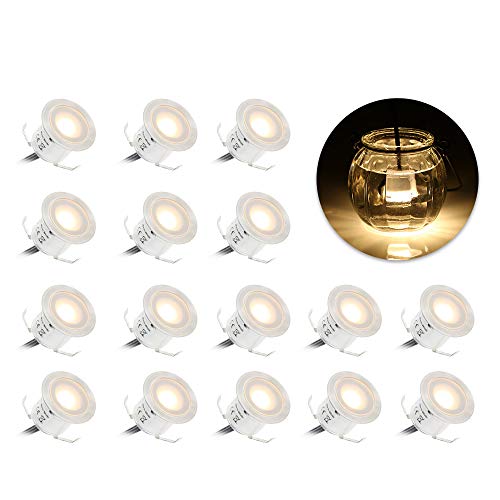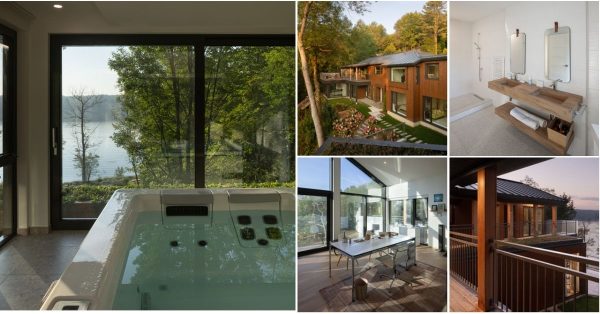Lighting can set the entire mood for your home and add warmness and charm. Recessed lights, sometimes referred to as housings, downlights, pot lights, or cans are a popular option because they can add a clean and finished look to any space. Deciding on the right recessed lighting is an important decision. Because of this, we have searched multiple sources to help you choose the right recessed lighting.
Changing or adding lighting in your space can add a cozy ambiance. Recessed lights can be installed into your ceiling, wall, or floor for a polished finish. Because of the method of installation, planning is necessary to make your lighting project a success. When choosing recessed lighting, there are a few factors to consider:
- Potential placement
- Spacing
- Task-oriented
- New construction
- Remodel
- Features
- Air-tight
- Dimmable
- Sloped
- Shallow
- Types of fixtures
- Standard line voltage
- Low voltage
- LED
- Retrofit
- Trim
- Sizes
Deciding on the right recessed lights is only one of the many decisions you will have to make during your project. What is the best type of recessed lighting? What is the difference between can lights and recessed lights? Are recessed lights out of style? Do recessed lights increase home value? We will answer all of these questions and discuss other closely related questions; keep reading.

1. Potential placement
Recessed lights are composed of two parts, the housing and the trim. The housing portion of recessed lights is the portion that is recessed into the surface of your choice. The trim is the portion of the recessed lighting that is visible. You will want to consider both the housing and trim of the recessed light when deciding on placement.
Spacing
When looking at the spacing of your lighting, measure half of your ceiling height and use this measurement to space your recessed lights. Spacing from existing objects is also a possible consideration when installing recessed lighting. At least three feet of space is needed from walls to recessed lighting. 14 - 18 inches of space is the usual amount of space for installing lights around existing objects such as bookshelves, drapes, or cabinets.
Task-oriented
Sometimes lighting your area properly is a necessity. Recessed lights can be angled down or in any other direction to light the desired area in your space. If lighting a specific portion of counter space is the goal, recessed lighting can be placed and angled in a way that does just that. Art on your wall can be emphasized by using recessed wall lighting angled upward toward the object of focus.
New construction
Recessed lighting housings made for new construction are created for installation in areas with exposed ceiling joists and no drywall in place. The only exception is a completely gutted remodel where the ceiling joists are visible and drywall is out. New construction housings are nailed or screwed directly to ceiling joists, creating solid support.
The housing for new construction recessed lighting is more significant than that used when remodeling housing. Although they occupy more space in your ceiling, placement is more flexible with new construction fixtures. New construction fixtures are usually less expensive and offer a wider variety of styles than remodel fixtures.
We may include affiliate links and curated AI content to highlight top design styles.
Click here to find this product on Amazon.
Remodel
During a remodel, ceiling joists are not visible, and a particular type of housing is needed to clip into a hole created in the ceiling's surface. Remodel recessed lights are held in place using a clipping mechanism.
IC rated
One consideration in using remodel recessed light fixtures is insulation around the area you will install your recessed lighting. IC or insulation compatible fixtures are necessary for installation around insulation. If the fixture is not IC rated, three inches of clearance are needed between insulation and lighting fixture. Recessed lighting should be avoided with concrete ceilings.
Click here to find this product on Amazon.
Features
With so many different features available in recessed lighting, there is sure to be a lighting fixture perfect for all of your needs. Below we will discuss some of the most popular recessed lighting features, including air-tight, dimmable, rated for damp areas, sloped, and shallow.
Air-tight
To preserve energy, air-tight recessed lights refer to an energy code that limits the amount of air leakage or energy loss. The preservation of energy created with air-tight lighting fixtures makes air-tight recessed lights overall better in quality.
Click here to find this product on Amazon.
Dimmable
Wiring your recessed lighting to a dimmer switch can give you the ability to decrease the illumination in your space. Brighten your lights when ample lighting is needed and dim the lights to create a mysterious mood and ambiance in your room. Dimmable lights are also a great option to decrease energy consumption.
Click here to find this product on Amazon.
Rated for damp or wet areas
Lighting areas such as bathrooms can pose their own set of issues. The damp air or water can damage lighting fixtures that aren't designed for wet or damp areas and cause accidents due to the accumulation of water combined with electricity.
Damp-rated lighting is suitable for bathrooms, basements, laundry rooms, and outdoors if water cannot get into the fixture. To light wetter areas such as showers, walkways, outdoor spaces, or gazebos, wet-rated lights are required.
Click here to find this product on Amazon.
Sloped
For sloped ceilings, a particular recessed lighting fixture is needed. Sloped recessed lights are longer on one side, allowing the light to shine straight down on a sloped ceiling. Your ceiling's slope will need to be calculated before purchasing sloped recessed lighting fixtures for a proper fit.
Click here to find this product on Amazon.
Shallow
If you are tight on space, a shallow recessed light housing may be the answer for you. Standard housings are usually about 7 1/2 inches in depth, while shallow recessed lighting housings are only about 5 inches deep. Shallow recessed lighting may also be perfect for smaller spaces under ceiling rafters.
Click here to find this product on Amazon.
Types of fixtures
Considering the placement and features of recessed lighting, types of fixtures should also be considered, such as voltage type and LED options.
Standard line voltage
Standard line voltage is the most commonly used recessed lights. They can be plugged in directly to any standard electrical outlet and do not require the use of a special dimmer, transformer, driver, or ballast. Because of their simplistic design, standard line voltage recessed lighting is the least expensive option.
Click here to find this product on Amazon.
Low voltage
Low voltage recessed lighting consists of compact lamps that are a popular option for accent lighting. With many options of available trim options, low voltage recessed lighting is a more versatile type of lighting. Low voltage recessed lights require a transformer to convert incoming high voltage down to a lower voltage, making them a bit more complex. Because of this, low-voltage recessed lights are a bit more expensive.
Click here to find this product on Amazon.
LED
LED lights create less heat than traditional lights, making them more energy-efficient. Because they generate less heat, LED, lights are safe to install in places where conventional light bulbs may be unsafe. With an average lifespan of a little over five years, LED lights also last longer than other lights and are cheaper to operate.
Click here to find this product on Amazon.
Retrofit
Standard recessed lighting can be converted easily to LED lights through the use of a retrofit fixture. Retrofit LED lights can be installed over existing recessed lights by removing trim. These lights are then installed directly over the existing recessed light for a more energy-efficient light.
Click here to find this product on Amazon.
Trim
The trim is the visible portion of your recessed lighting covering the opening in the ceiling and the housing portion of the recessed light. Trim can change the look of your ceiling from simple trim that blends in with its surroundings to detailed and ornate trim that stands out from its background. Trim can also come in different sizes, from tiny accent lights to industrial size recessed lighting.
Sizes
Recessed lighting housing and trim are sized to match one another, so keep this in mind when choosing separate parts for your recessed light. Sizes, in diameter, of recessed lights can range in sizes from teeny-tiny 1" lights to 12" industrial-sized lights. 6" lights are most commonly used for general home lighting.
What is the best type of recessed lighting?
The best type of recessed lighting will depend on your project and the look you are trying to achieve. The recessed lighting that creates the perfect illumination for your space is attractive to you and your family and offers durability is likely the best lighting for you and your home. If energy consumption is an important issue to you, this should also be considered when choosing the best type of recessed lighting for you.
What is the difference between can lights and recessed lights?
Recessed lights can also be referred to as can lights. Named because of the can housing that sits in the space above the ceiling, the terms can lights and recessed lights are used interchangeably.
Are recessed lights out of style?
According to experts in the field of lighting, although certain trim styles and colors may go in and out of style, recessed lighting itself never will. One of the biggest benefits of recessed lighting is the ease of changing the look of your light simply by changing the trim. From simple design to ornate and detailed, trim comes in various colors, styles, and even shapes. The wide selection of options in recessed lighting makes recessed lighting timeless.
Do recessed lights increase home value?
Recessed lighting does not increase home value but may attract potential home buyers. A well-lit home creates a warm ambiance that makes your home more appealing. By using recessed lighting instead of a drop-down option, the illusion of space is created. This can also draw the attention of potential home buyers.
Final thoughts
Lighting your home may seem like a simple task, but it is an important detail that can have a considerable impact on the overall look of your home. The lights that you choose should fit the needs of your home and your family. Recessed lighting is a popular option that may make all of the difference in the ambiance of your space. We hope that the above selection has helped you to narrow down your recessed lighting choices.
Before you go, here are some other articles that may be of interest to you:
Can You Add Recessed Lighting To Existing Ceiling? [And How To]













